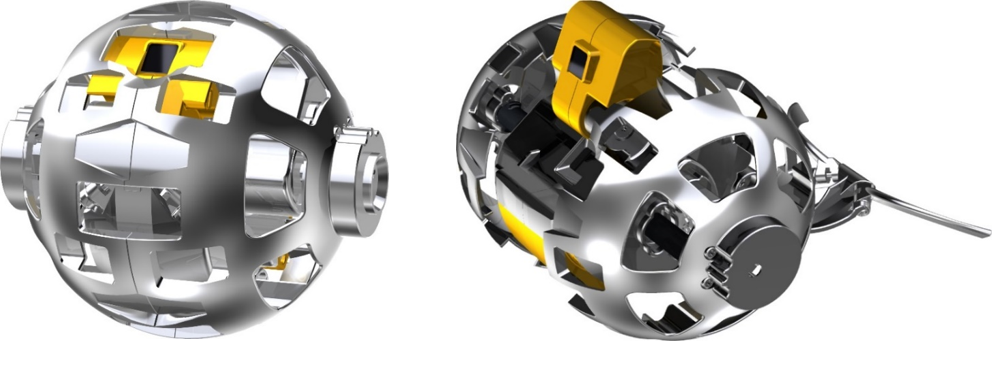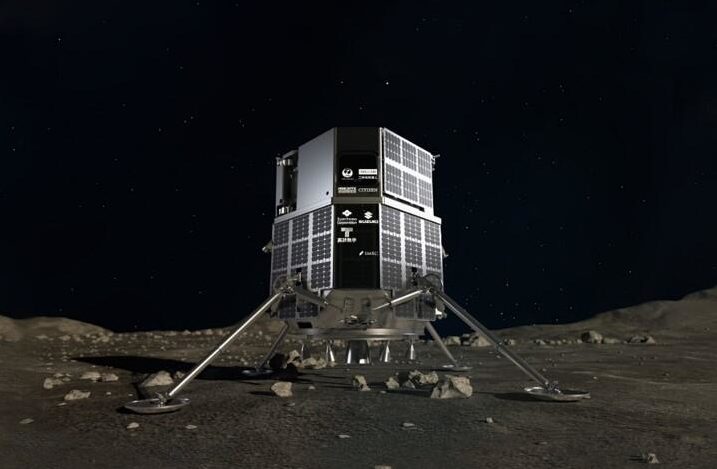
Japan’s transformable lunar robot before (left) and after transformation.
The Japan Aerospace Exploration Agency (JAXA) is planning to send a transformable lunar robot to the Moon in 2022. JAXA said the robot will collect data about the Moon’s surface. This data will help JAXA develop the autonomous driving and cruising technology for its crewed, pressurized rover that’s in development.
To save space in the lander, the robot will be shaped like a 3.5-inch diameter ball and weigh just 0.55 lb. After it’s deployed on the Moon, it transforms into two halves with a connecting axle between them. The separated halves serve as wheels to allow the robot to move around on the Moon.
The robot will be transported to the Moon by ispace’s lunar lander. Japan’s ispace was selected as a result of an open bidding process for the lunar transportation of the transformable lunar robot and data acquisition and signed a contract in April 2021.
While the robot travels on the Moon, images of regolith (moon dust) and the lunar surface taken by the robot and the camera on the lunar lander will be sent to the mission control center. The lunar robot will employ the miniaturization technologies of TOMY Company and Doshisha University, the control technologies of Sony, and the development technologies for handling the space environment of JAXA.

ispace’s lunar lander will carry the robot to the Moon. | Credit: ispace
“In 2019, the Government of Japan decided to participate in the Artemis program, which was proposed by the U.S. Based on the decision, JAXA has been promoting mission development and system studies on international space exploration targeting the Moon and Mars by gathering Japanese technologies and knowledge,” said Sasaki Hiroshi, VP, JAXA. “In particular, the crewed pressurized rover will play an important role in developing mobility on the lunar surface for sustainable exploration activities. The data on the lunar surface can be obtained by utilizing the transformable lunar robot which is a production of the Space Exploration Innovation Hub and the lunar landing missions of the commercial company. By making the best use of the data, we will surely proceed with the study on the crewed pressurized rover.”
JAXA is following up recent milestones from the China National Space Administration (CNSA) and NASA. CNSA’s Zhurong rover touched down on Mars on May 15. In doing so, China became only the second nation, after the United States, to successfully put a rover on Mars and operate it for a significant length of time. CNSA hopes to get at least 90 Martian days of service out of the six-wheeled robot at its location on Utopia Planitia, a vast terrain in the planet’s northern hemisphere.
NASA forever changed space exploration with its near-flawless execution, thus far, of its Mars 2020 Mission. The organization’s Perseverance Rover landed on Mars on February 18, 2021, traveling 292.5 million miles from Earth. The fifth robotic rover is currently searching for signs of previous life on the Red Planet. Also attached to its underbelly was the Ingenuity Helicopter, which became the first aircraft in history to make a powered, controlled flight on another planet.
Follow our complete coverage of the Mars 2020 Mission here.
The post Japan sending transformable robot to Moon in 2022 appeared first on The Robot Report.
阅读原文